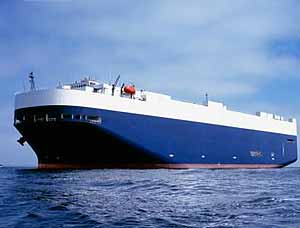October 30, 2007 (the date of publication in Russian)
Alexei Chichkin
THE STRATEGIC THOROUGHFARES OF FUTURE
New waterways to change global economic geography
 The new world architecture implies a crucial transformation of global trade, with proliferation of international trade routes and emergence of new transport facilities. New independent states, emerging in the last two decades, are interested in new transcontinental traffic lines. On the other hand, countries located at the crossings of international trade routes, such as Iran, Greece, Turkey or Myanmar, are today able to elaborate and implement new international water transportation projects.
The new world architecture implies a crucial transformation of global trade, with proliferation of international trade routes and emergence of new transport facilities. New independent states, emerging in the last two decades, are interested in new transcontinental traffic lines. On the other hand, countries located at the crossings of international trade routes, such as Iran, Greece, Turkey or Myanmar, are today able to elaborate and implement new international water transportation projects.
New international water thoroughfares are an indispensable element of the multipolar system of global economy. Major artificial waterways, such as the Panama Canal, the Suez Canal, and the Kiel Canal, were established by the world powers dominating at the verge of the XIX and XX centuries in their own interests. Not surprisingly, the Suez and the Panama canals were supplied with extraterritorial zones along their banks, controlled respectively by Britain and France till 1956 and by the United States till late 1980s. Oil pipelines, extending along those extraterritorial zones, were also dominated by US and British corporations.
By today, the era of monopolization of international sea-to-sea and sea-to-river routes has actually com to an end. The increase of container traffic, as well as sea transportation of fuels, requires construction of new water thoroughfares, including: a canal parallel to the Bosporus and the Dardanelles, the Kra Canal across the Malacca Peninsula, as well as artificial water connections between the Danube and the Aegean Sea, the Caspian and the Persian Gulf etc. These and other routes are expected to reduce traffic along high-density waterways like the Bosporus and the Malacca Strait by one third, and thus to activate Russian foreign trade.
Several ministries of Turkey's Government, along with major Turkish banks and corporations, are promoting a project of a 140-km-long canal, connecting the Black Sea with the Aegean Sea across the European part of Turkey. The canal, estimated in $300-320 million, is supposed to submit to an exceptionally Turkish jurisdiction – on the contrary to the straits, regulated by the international conventions of Lausanne, 1925, and Montreux, 1936.
The rivaling project of a 400-km canal, connecting the Danube, the Vardar and the Aegean Sea and crossing Serbia, Macedonia and Greece, may involve most of the countries of Europe, regarding use of the existing Danube-Tisa and Danube-Main canals. Construction costs are estimated in $700mln. The major political obstacle lies in disaccord between Macedonia and Greece.
The Trans-Iranian Canal, connecting the Caspian Sea with the Persian Gulf, is supposed to establish the most convenient access into the basin of the Indian Ocean for the Scandinavian, Baltic and Black Sea regions, as well as the basins of the Danube and the Volga. This project's implementation is supposed to be started in 2009. The Trans-Iranian Canal would allow to almost double Russia's foreign trade traffic activity in the southern and south-eastern directions, reducing expenses by one third. The perspective of an end-to-end water transport system from the Persian Gulf to the Baltic with involvement of Russia is of special importance. It is noteworthy that the Caspian-Persian Gulf Canal was designed as far back as in early 1960s. The relevant agreement was reached in Moscow by Shah Mohammed Reza Pahlavi, but the project was obstructed by the United States.
In their turn, Myanmar and Thailand promote construction of a canal crossing the Isthmus of Kra and significantly reducing the route connecting the Pacific and the Indian Ocean. The Thai option suggests a 200-km canal crossing the southern part of the isthmus, close to the Thai-Malaysian border, while Myanmar insists on a northern option of 45 kilometers, possibly prolonged to the Pacific across the Siam Bay. The project promoted by Myanmar is supported today by China and India. According to calculations of UN's Economic Commission for the Asia-Pacific Region, it could be implemented and would pay off sooner than the former project.
Number of shows: 1477
 ENG
ENG 

 ENG
ENG 
